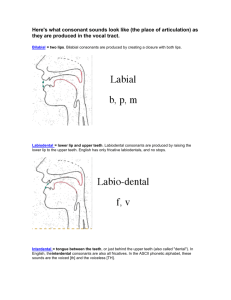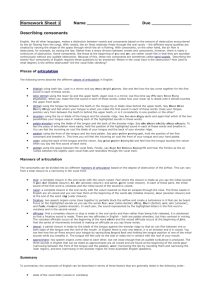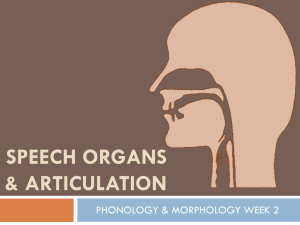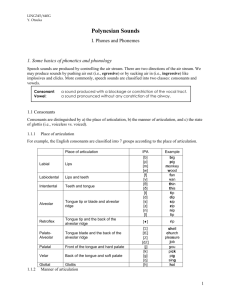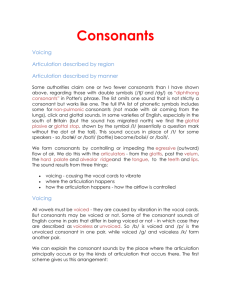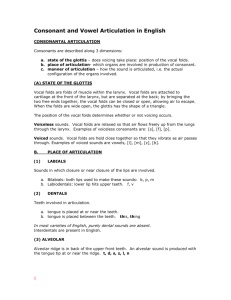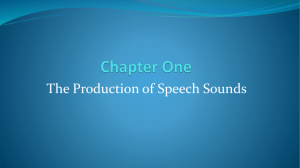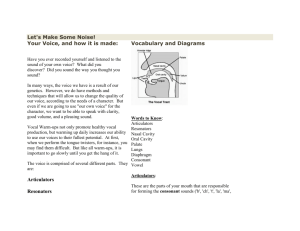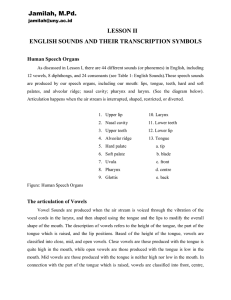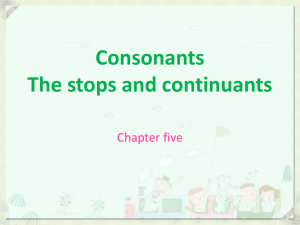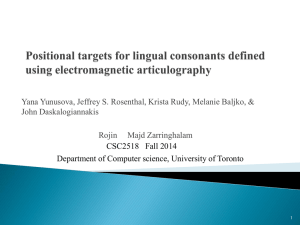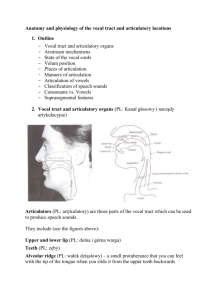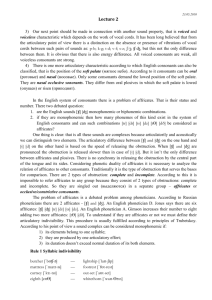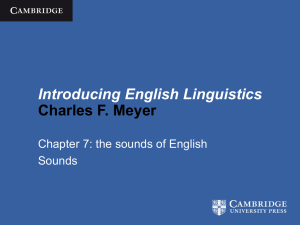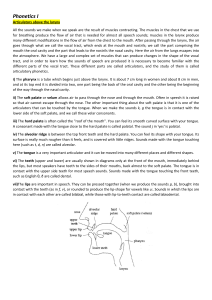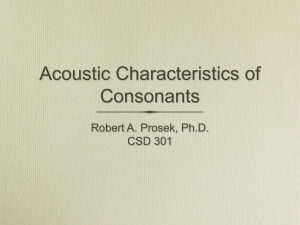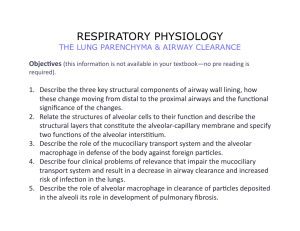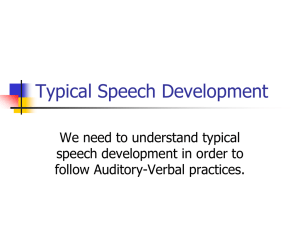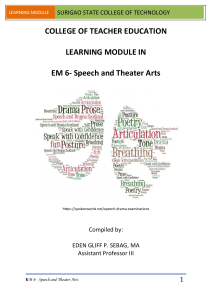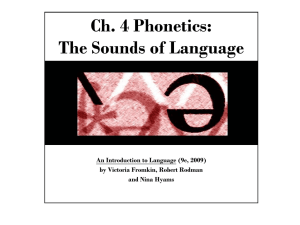English-Consonants
advertisement
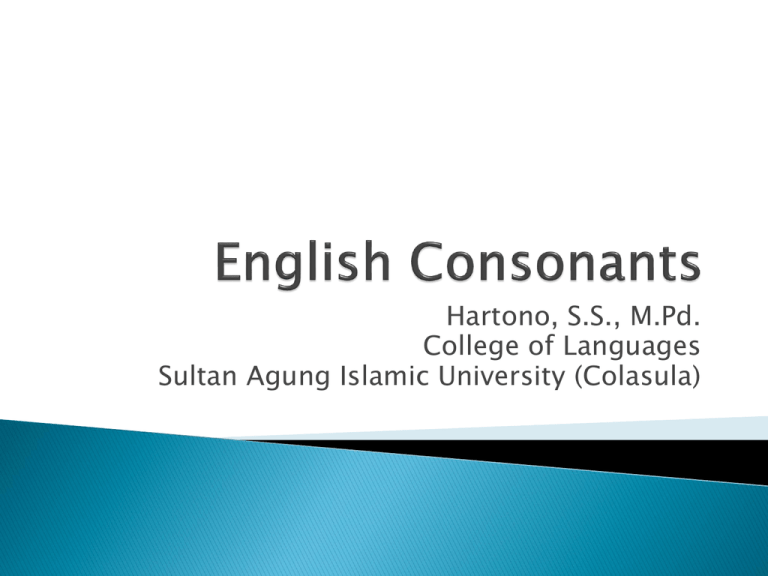
Hartono, S.S., M.Pd. College of Languages Sultan Agung Islamic University (Colasula) Articulatory: The airflow may be stopped, impeded, or diverted (trough the nasal tract). The vocal folds may or may not vibrate during articulation. Acoustically: consonants are less sonorous than vowels, that is, vowels are perceived as louder and longer sounds. Functionally: generally consonants do not function as the nucleus of a syllable. Consonants are categorized into three dimensions of their productions: - Place of articulation - Manner of articulation - State of the vocal cords (voiced or voiceless sounds). Place of articulation refers to which speech organs are used to articulate a consonant. Consonant productions usually involves two articulators. In many cases, one is the active articulator (which moves), and the other is the passive. In the case of bilabial consonants, both articulators are active. Bilabial: involving 2 lips Labiodental: involving the lower lip and upper teeth Dental / Interdental : involving the tip of the tongue and teeth. Alveolar / lingua alveolar: involving the tip of the tongue and alveolar ridge Palatovelar / Alveopalatal / lingua palatal: involving the blade of the tongue and the alveopalatal area (between the alveolar ridge and the hard palate) Velar: involving the back of the tongue and the velum Pharyngeal / Glottal: involving the vocal folds as primary articulation. Stop / Plosive A plosive is a consonant articulation with the following characteristics: a) one articulator is moved against another, or two articulators are moved against each other, so as to form a stricture that allows no air to escape from the vocal tract. b) The air is then released. c) Some plosives are voiced, the others are voiceless. Bilabial: / p/ : pin, pen, pear, cup, pup, Poppy /b/ : bin, Ben, bear, cab, pub, Bobby Alveolar / Lingua-alveolar : / t / : too, sent, cart, write, train, trunk / d /: do, send, card, ride, drain, drunk Velar / lingua-velar: /k / : coat, curl, class, back, crowing /g / : goat, girl, glass, bag, growing Fricative Fricatives are consonants with the characteristic that air escapes through a narrow passage and makes a hissing sound. Fricatives are continuant consonants which means that you can continue making them without interruption as long as you have enough air in your lungs. The importance of the narrow passage: a) Make a long, hissing s sound and gradually lower your tongue so that it is no longer close to the roof of the mouth. The hissing sound will stop. b) Make a long f sound, then pull your lower lip away from the upper one. The sound will stop. Labio-dental / f/ : safe, fine, fail, few, fast, ferry / v/ : save, vine, veil, view, vast, very Dental: / θ/ : mouth, thumb, thick, think, path / ð/ : than, they, there, those, either Alveolar: /s / : Sue, C, sip, bus, piece, price / z/ : zoo, Z, zip, buzz, peas, prize / ʃ /: she, shoe, ship, ash, show, push / ʒ/ : casual, massage, occasionally, collision, measure, casualty Post Alveolar: / tʃ / : cheap, choke, riches, cherries, larch, H. / dʒ/ : jeep, joke, ridges, Jerry’s, large, age / m /: mile, mine, mummy, comb, name / n/ : Nile, nine, money, cone, mane win, thin, ban, ran, run, Ron / ŋ/ : wing, thing, bang, rang, rung, wrong / l/ : long, light, load, jelly, fly, glass / r/ : wrong, right, road, Jerry, fry, grass / w/: we, west, wet, wine, whale /j /: yolk, use, yam, yes, years
